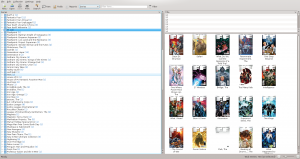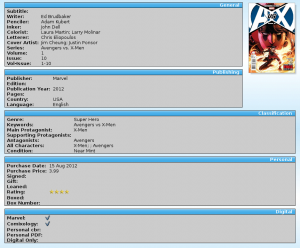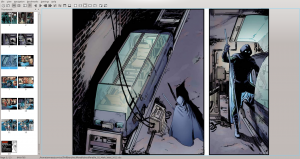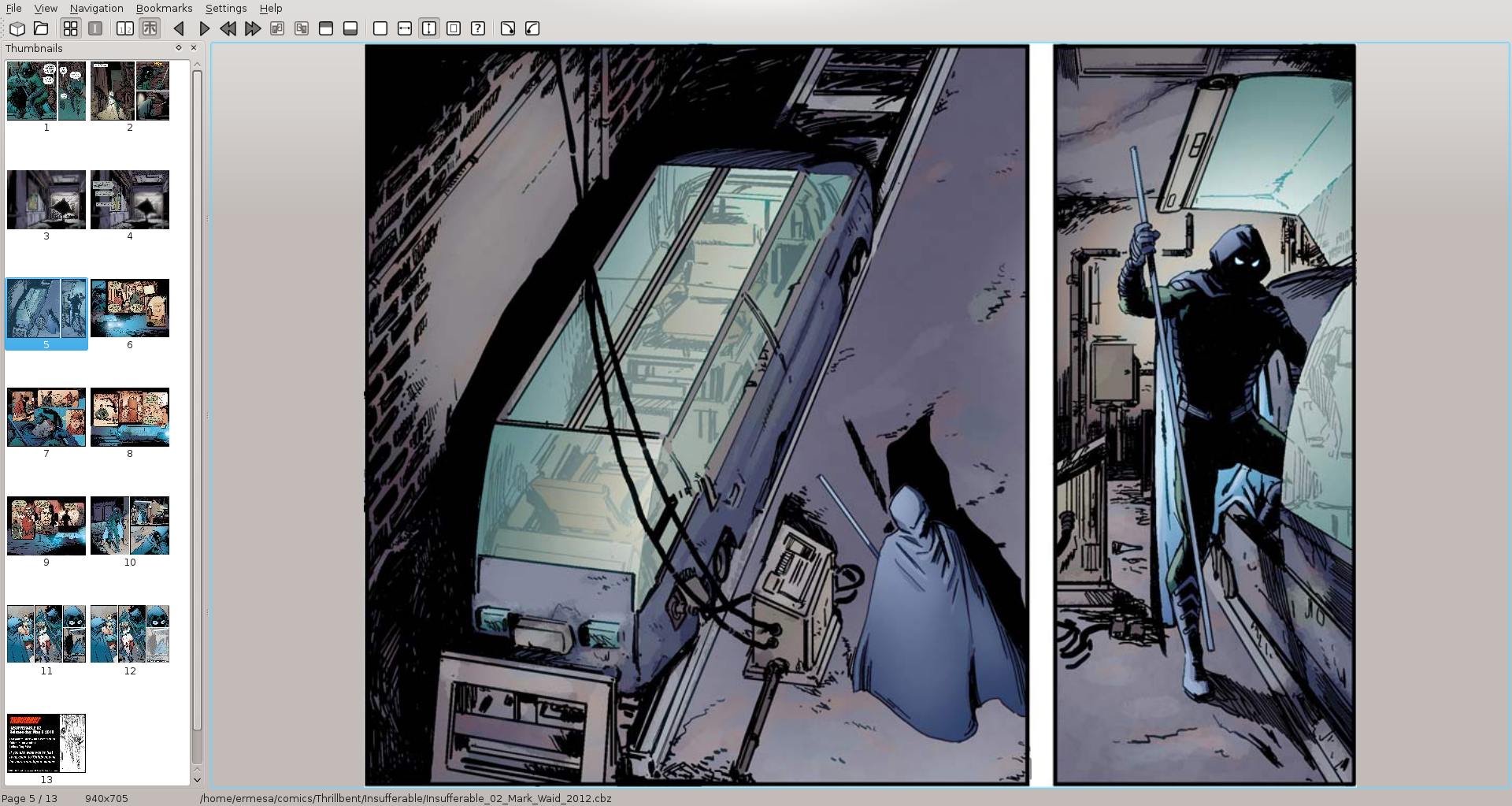Everyone who gets into collecting comics seriously eventually ends up asking the question – how do I keep track of my comics? It becomes hard to remember which ones you have and where they are in your house. I ended up using Tellico. It works on KDE which is primarily a Linux desktop environment, but there is also KDE for Windows and OSX. It looks something like this:

Originally, I just considered Tellico because it works so well with KDE, but I’ve stayed with it because it’s so awesomely customizable. You can store and sort based on whatever fields you want. It has a comic book template, but I’ve customized the heck out of it to have all kinds of data. And here’s a great example of all the data that I store for my comics:

I’ve been using it since I started collecting my comics last year. Recently I started thinking about digital comics and whether it makes financial sense. For my comic book reader I decided to use qcomicbook. I really like how it works.

The only problem is that qcomicbook doesn’t have a built-in comic database. It’s not extremely easy to see all my Spider-Man comic books, for example. Then I realized that I already had all that data within Tellico. I can sort by author, series, character, and pretty much any other field I have in there. All it would need is a way to link the comic to the file on my computer and to be told to use qcomicbook to launch it. The programmer already has something like that built in for viewing the cover, so it shouldn’t be too hard to have that added on. This would also work really well because there isn’t really a standard with digital comic books for storing the metadata. I’m going to see if the Tellico programmer is game to doing so and if he does, I’ll be sure to blog about it here.

[…] a computer screen with its horizontal orientation. (It’s slightly less necessary on tablets) Some CBZ/CBR programs try to approximate it, but it tends not to work well if the artist uses non-standard page layouts. […]
try yakreader
http://www.yacreader.com/